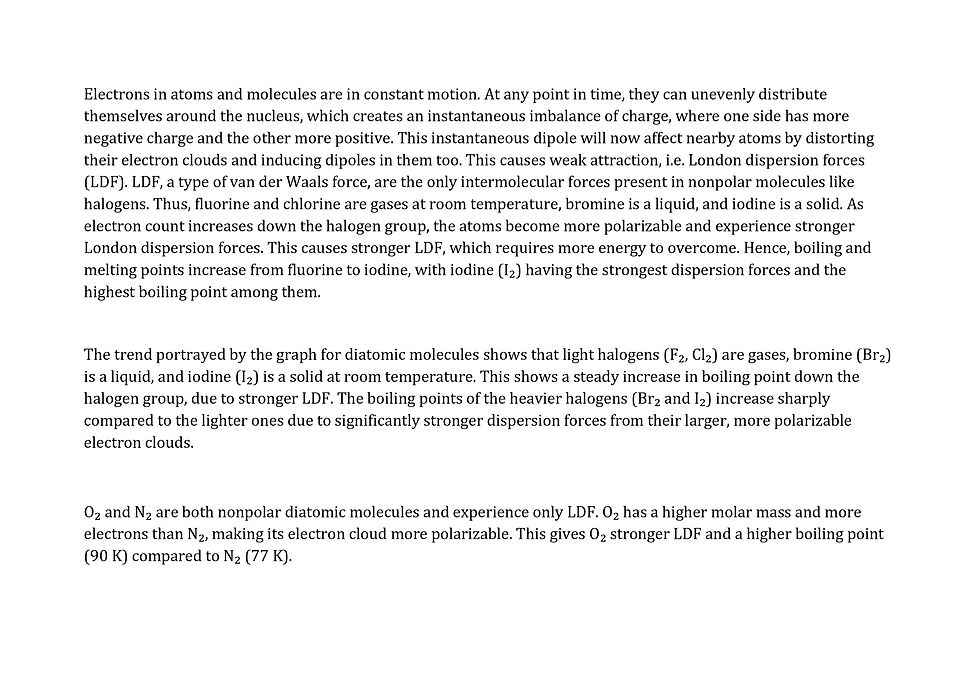CheMYSTERY
- Sundry Fires In Rain
- Feb 9, 2019
- 4 min read
Updated: Jun 11



















------------------------------------------------------------------------------------------------------------------------------------------------------------------------------------------------------------------------


------------------------------------------------------------------------------------------------------------------------------------------------------------------------------------------------------------------------
Greenhouse Gas Emissions and Global Warming
“For years, there has been clear scientific consensus that Earth’s climate is heating up and that humans are the culprits behind the trend…”
Emissions of greenhouse gases are causing the Earth to transition into a warmer state. A greenhouse gas is any gas that absorbs and emits radiation in the infrared range, i.e. thermal radiation. The four main greenhouse gases are Water vapor, Carbon dioxide (CO₂), Methane (CH₄) & Nitrous oxide (N₂O). The major human-made contributor to climate change is carbon dioxide (CO₂). When present in the atmosphere, these gases trap heat and cause a warming process known as the greenhouse effect.
Urban homes emit more greenhouse gases (GHGs) than some industries. India’s capital is among the most polluted cities in the world. Around 8 million cars, trucks, buses, and three-wheeled motorized rickshaws release carbon monoxide, hydrocarbons, fine particulate matter and dangerous particles like those that form smog. Other common causes of smog include burning of agricultural crops, coal emissions, construction dust, and reactions between sunlight and nitrous oxide or organic compounds.
Smog can be so thick on a winter day that it blocks out the sun and remains trapped close to the ground. It causes an increase in eye irritation, asthma, lung diseases, and even premature death due to poor air quality. This type of air pollution is toxic to human beings and leads to respiratory health issues and reduced lifespan.
WHO says that air quality in the Delhi is among the worst globally. Air quality inside homes can be improved through the use of air purifiers, ionizers, humidifiers, air-purifying plants, and regular vacuuming of furniture. Masks also help reducing personal exposure to smog.
Carbon dioxide warms the Earth by trapping heat and affecting plant function. High CO₂ levels reduce plants' evaporative cooling, which is a natural process where plants release water vapor to cool their surroundings. When this cooling decreases, local warming increases.
Climate change theory had data supported from tree rings, ice cores, and coral reefs collected with instrumental observations of air and ocean temperatures, sea ice melt, and greenhouse gas concentrations.
Elevated CO₂ can improve crop yield for C3 crops (wheat, rice, soybeans) and water-use efficiency, but only up to a point and net environment impact stays negative. It also increases plant growth in some natural ecosystems, thus contributing to terrestrial carbon sinks that absorb 25% anthropogenic CO₂ emissions. Rising CO₂ has measurably increased vegetation cover, especially in semi-arid regions but these aren’t exactly appealing in the long-run. However, most of the big increases in yields over recent decades are due to advances in farming technology. The "CO₂ fertilization effect" is helpful, but it's only one part of a much bigger picture in agriculture.
Plants have a complex and diverse influence on the climate system. Trees can release up to 10 gallons of water per day, acting like a natural air conditioner until CO₂ levels rise too much. The decrease in plant cooling adds to global warming. Nutrient correction is already a common practice in agriculture. Some indicators of human well-being continue to improve despite climate risks.
A Stanford University study estimates that the economic damage caused by CO₂ emissions is roughly $220 per ton. This estimate (social cost of carbon) includes impacts such as changes in agricultural output, effects on human health, property damage from flooding and other side effects of climate change.
The U.S. government evaluates emissions-reduction policies (like power plant regulations and vehicle fuel standards) using this cost. Even though reducing emissions is expensive, it is considered worthwhile because of the severe damage caused by carbon emissions. The social and environmental costs of inaction are far greater.
Climate change has many direct and indirect social and cultural consequences. Rising temperatures and more frequent extreme weather events strain food systems by affecting availability, access, stability, and use. Agricultural productivity is impacted through lower crop yields, increased pest and disease outbreaks & declining soil fertility and moisture retention.
Climate change is also contributing to regional water shortages. One of the most visible signs is glacial melting. By 2050, more than a billion people in Asia are expected to face freshwater shortages due to climate-related disruptions.
Climate Change and Human Health
Human health is affected by climate change both directly through changing weather patterns, and indirectly through changes in air quality, water resources, food supply, ecosystems, livelihoods, and infrastructure. These exposures can cause illness, disability, and higher mortality rates. Climate change disproportionately affects vulnerable populations and reduce the ability of people to adapt, especially in developing countries. Spread of infectious diseases, malnutrition due to crop failure, and heat-related illnesses are common.
What Can Science Do?
Science plays a vital role. Scientists have conclusively identified human activity as the main driver of increased carbon dioxide levels. Scientific communities worldwide have issued statements and published studies showing overwhelming consensus that global warming is real and human-caused. According to scientists, global warming poses serious risks to public health, the environment, the economy, and life on Earth.
What Science Can’t Do
However, science alone cannot solve the problem. Expecting climate science to be “proven” beyond all doubt is unfair, because no science works that way. It evolves. Science can identify problems and propose solutions, but implementation depends on society. It becomes meaningless if stakeholders aren’t on board with it. Science can measure damage, but economists and policymakers must step in to allot value and prepare regulations. It's a governance and ethical issue as much as a scientific one. Public understanding, political will, and social behavior are invaluable.
During 50s–70s, both greenhouse gas emissions and aerosol pollution were increasing. Greenhouse gases trap heat and warm the planet, whereas aerosols (like, sulfate particles from industrial smog) reflect sunlight and cool it. Scientists weren’t wrong but they just didn’t yet know which effect would be stronger. Since the late 70s, greenhouse gas continued rising and aerosol emissions declined due to air quality laws.
Citations
------------------------------------------------------------------------------------------------------------------------------------------------------------------------------------------------------------------------





------------------------------------------------------------------------------------------------------------------------------------------------------------------------------------------------------------------------





------------------------------------------------------------------------------------------------------------------------------------------------------------------------------------------------------------------------




------------------------------------------------------------------------------------------------------------------------------------------------------------------------------------------------------------------------



------------------------------------------------------------------------------------------------------------------------------------------------------------------------------------------------------------------------























Comments